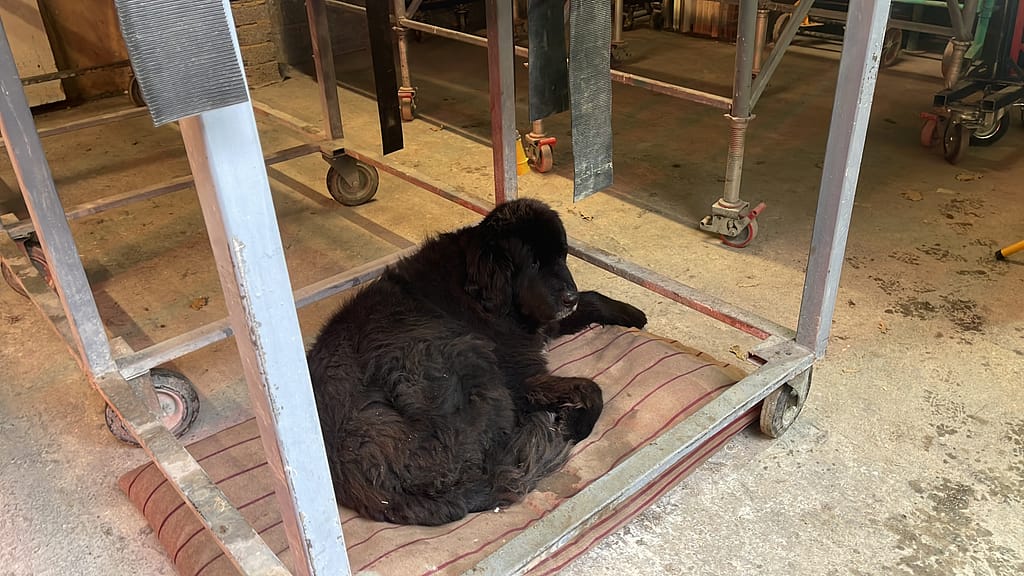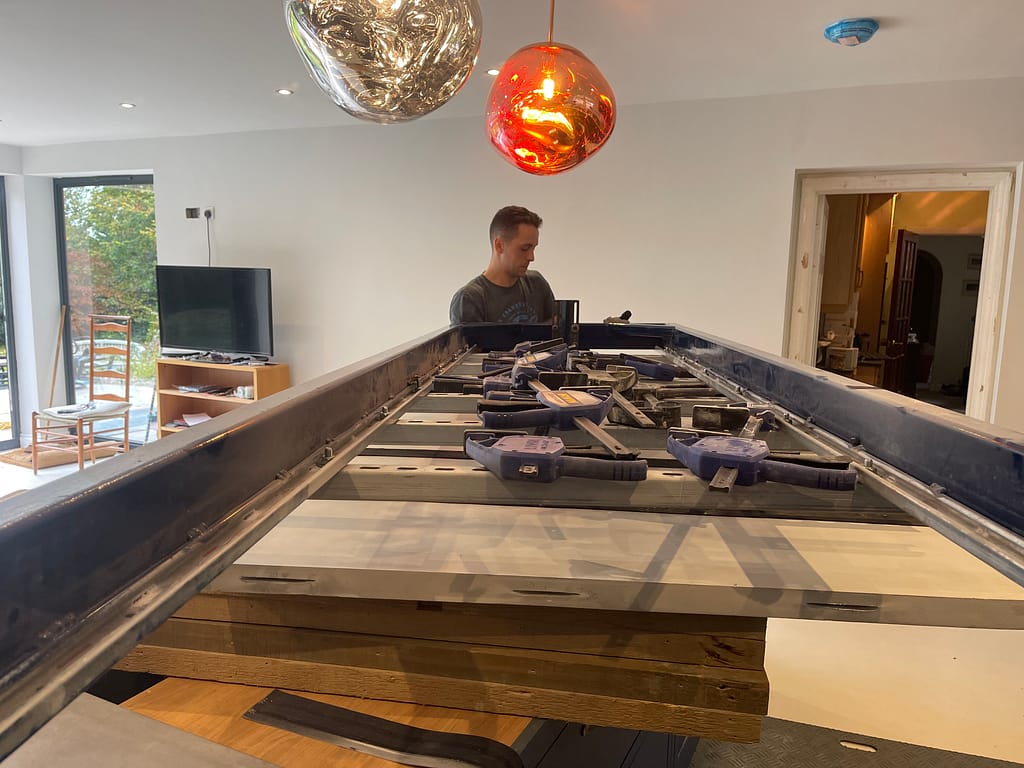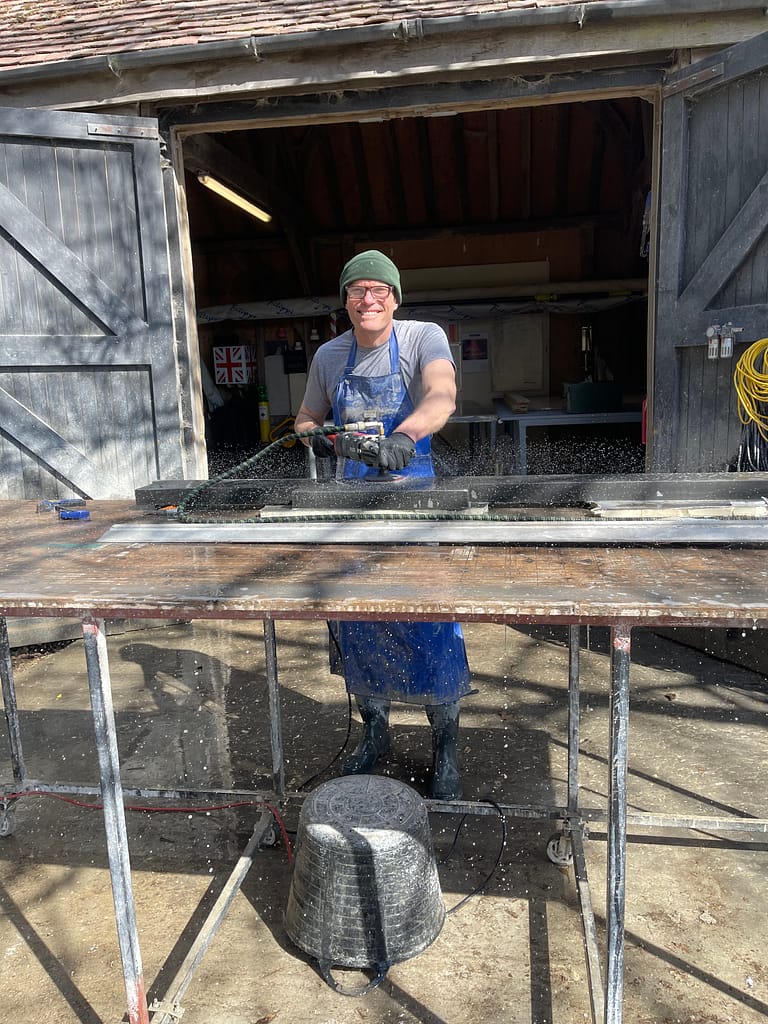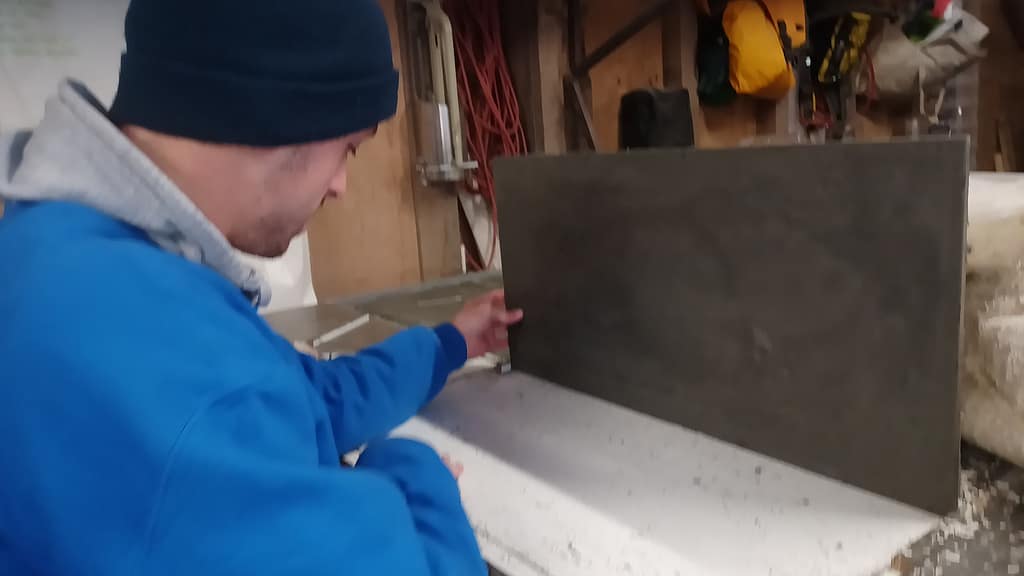Who we are
After over ten years in Burgundy working as a stonemason, where I first started polished concrete work, I came back to the UK and set about learning how to make a living out of producing the most beautiful concrete I was able to create. Five years later I am still learning and striving. We continue to make concrete kitchen worktops, but also make commercial installations and undertake abstract ornamental work.







History
Concrete, as we know it, is a product of the industrial revolution. A process that required significant heat from industrial processes to transform constituent rocks into what we call “Portland Cement”. The Egyptians three thousand years ago had a form of lime concrete and the Romans, two thousand years ago, had sophisticated concrete using lime mortar and silica-rich pozzolans. The technology that most of Seamless-Stone’s concrete is based on started in Stalinist Russia, as Moscow raced to compete with the New York skyline. After the war, Soviet scientists started to experiment with fibre-glass style reinforcements. Initially unsuccessfully, (not appreciating the need to zirconium-plate the multi-strand fibres to protect them from concrete’s natural alkalinity). The Americans took over GFRC’s development. This was especially true in concrete’s heartland of Chicago, achieving greater and greater load strengths. Using more and more advanced procedures and additives in concrete construction.
Civil engineers in the UK have used GFRC concrete since the late sixties. Principally for functional purposes, like leave-in-place shuttering for concrete pours in bridges. This uses GFRC’s strength and skinniness for a practical purpose. Civil engineers use GFRC concrete for tunnel supports, cladding panels, sprayed on retaining walls as well as more standard building projects. Decorative building cladding has been one of the delights of twenty-first century architectural trends. One of my personal favourites is the ROCA gallery in London. Lightweight and large spanning domes and seemingly impossibly slender arches. In the right hands, the marvel that is GFRC can be employed for domestic enhancements. It has decorative versatility and unrivalled strength for projects such as stairs, cantilevered kitchen worktops and bars.
Carbon footprint
Concrete may be synthetic, but its constituent parts are naturally occurring rocks. Choosing our worktops will leave you a smaller carbon footprint than shipping in granite from Brazil or ceramic worktops from Spain. We also use an advanced pozzolan which is a by-product from steel production blast furnaces, again enhancing the percentage of recycled inputs into our product. Sustainability is more than lip service for us. We minimise our waste and use our moulds as often as possible. We seek to live a low carbon footprint existence at home and at work. A simple article outlining some of the issues.
Sustainability
It is easy to speak a fair amount of nonsense when analysing the relative environmental impacts of products. There is no escaping that cement produces CO2 in its production. Constituent rocks are heated at over 1000 oC to become cement. This costs. However, when local production and reduced transport is factored in, we are confident our product will be the greenest of your choices.
Sequestering carbon dioxide in cement production is an exciting development. Although not yet mainstream – this is a proven technology. Our cement provider is the most local plant for our workshop, which reduces transport emissions and costs. We are also in discussions with local universities, on the south coast, exploring graphene fibres as an alternative to the Japanese zirconium-plated glass fibres we use. Thereby, hoping to reduce our carbon footprint further. Safety and availability of graphene additives currently prohibit us using graphene, but this will change soon.
We also expect that our pieces will weigh half that of our wet-cast, polished-concrete counterparts, thereby saving materials and reducing our carbon footprint further. GFRC’s superior strength over standard concrete will allow this reduced thickness on our pieces. Aesthetically this thinness can be compensated for by having deep, integrated apron edge. This gives the appearance of a thick kitchen worktop without the weight or bulk. Our bespoke polished concrete worktops are the only product that allows these seamless apron edges. Quartzite and Corian will have a seam. If you want thinness to rival Dekton, we can match that too in our polished concrete kitchen worktops.
How?
Magic Moulding
The preparation and manufacture of our moulds is a painstaking task. For instance, in our bespoke polished concrete worktops, we use silicon flexible moulds for draining board shapes and complex 3-D forms. Sinks and other double-curved or free-form shapes require fibreglass moulds. Super smooth furniture board, glass and perspex are all used in creating blemishless finished products. The shape of the mould is akin to a negative of the finished product, and planning will be needed to carefully construct complex forms.
Curing or Drying? Hydration or Evaporation?
Concrete requires time to cure. The water used to activate the powdered cement is less than the water used to create a workable concrete mix. A 10kg concrete slab, when fully cured, might be made of 8kg of powdered initial ingredients, and 2kg of water. The cement and pozzolans hydrate and change their chemical compounds by acquiring H2O from the water. But, to make the 10kg finished concrete table, perhaps a further 2kg of water was added to the mix to make it sufficiently malleable to work. Thus of the original 8kg of dry original ingredients and 4kg of water, 2kgs of water evaporate. 8kg of dry mix hydrates with 2kg of water to form 10kg of GFRC.
Careful concrete curing is crucial in obtaining the correct strength and consistency. Too much water in the initial mix will result in a separation of heavy aggregates from lighter cements. But too little water will make the mortar unworkable. Uncontrolled evaporation will result in insufficient hydration and greatly reduce final strength.
Seamless-Stone uses a concrete forming technique known as GFRC concrete – Glass Fibre Reinforced Concrete for its polished concrete kitchen worktops and concrete architectural furniture. This is not the same as polished concrete. Generally, there are two techniques for creating decorative concrete structures – the two-step mist coat and GFRC backing coat, and the more traditional cast concrete with a wet polished finish. Ours is the former.
In essence, this process uses glass fibres to strengthen the concrete, allowing extraordinarily thin concrete slabs. This creates a weight that is light enough to be used as furniture – for tables, chairs and kitchens.
What?
GFRC or Polished Concrete?
Polished concrete is the name for the more straightforward process of pouring concrete as a slab and smoothing down the finished surface with wet polishing. Unless you intend to have glass fibres showing in your finished surface, you can only make polished concrete products without glass fibre concrete. Thus your slabs will be limited in their strength with consequently increased thicknesses (i.e. greater than 1cm thin). Also, it’ll be an impossibility to produce seamless moulded surfaces such as integrated draining boards, sinks and cascade vertical drops. The upside of a polished concrete product is that it can be poured on-site. However, the wet polishing process is a messy business and is not something to undertake in a lived-in house.
Spray coat and backing coats
The other most obvious consequence of this process is the super smooth finishes achievable. Perfectly planar forms without blemishes result from the process of spraying a mist coat of mortar onto a precisely prepared mould. This mist coat is reinforced with zirconium-coated glass fibred backing concrete. This provides strength without the bulk associated with steel-reinforced concrete. A traditional cast concrete approach can be made at the client’s premises but will require significant post-production machining which will be wet and messy. Our methodology means each project needs to be made at our workshop. But corresponding advantages of using glass fibre and moulds means that superior strength and more planar finishes are achievable.
Magic Ingredients
The choice and mix of various fine sands, pozzolans, polymers, plasticizers and cement, as well as fine fibres and poly filament fibres, requires expertise. The process of pneumatic and manual application of the concrete into the mould needs care and experience.
Sophisticated polymers bind the multifilament zirconium glass fibres. Lithium silicates bind to calcium hydroxides on surface curing The technology behind our bespoke polished concrete worktops is not for the work of a building contractor. This is a material to be adored like stone but thought of as an endless design opportunity.
We have discussed the choice and use of each individual ingredient in our GFRC at length with each supplier. These esoteric conversations are part of our passion and perhaps a slightly geeky fascination in our subject matter. It is what allows us to take care of the background and allows you to enjoy the end result.
Cement
The invention of cement may be over five thousand years old. Perhaps the Egyptians used cement in the massive blocks that make up the Giza pyramids. Others have pointed to the beautiful domed roof of the Parthenon in Rome. Romans used cement for its amazingly large 2000-year-old span.
Lime and a pozzolan (a cementitious addition) in the form of volcanic ash were likely the main ingredients in the Parthenon’s concrete. This same combination also made Roman aqueducts waterproof.
Neither structure uses what we know today as Portland cement. The patent for this came about in 1827, when some brickmakers were experimenting with mortars. Traditionally, for hundreds, if not thousands of years, limestone needed around 600 degrees Celsius to heat. With water and carbon dioxide and oxygen, this became lime mortar. Thence, on a building site, with the addition of the aggregate and water, back to a solid.
Portland Cement
The genius of the invention of Portland cement was to incorporate silicate-bearing rocks into cement. Calcium silicate hydrates are the magic compound in Portland cement, as opposed to calcium hydrates in lime. These silicates are many times harder than their lime counterparts. However to create Portland cement from its constituent rocks a far greater heat than that used to process lime is required. Something closer to 1200 oC.
Thus the inventors of Portland cement were the beneficiaries of the skills available in their time – the inventions of the industrial revolution, and large furnaces.
Today, the GFRC we use for our bespoke polished concrete worktops, at Seamless-Stone is not a standard building contractor’s cement. It is a specialist cement without lime filler, which has a much higher compression strength than builders’ cement.
go to our Pinterest site to see various concrete pieces that have inspired us